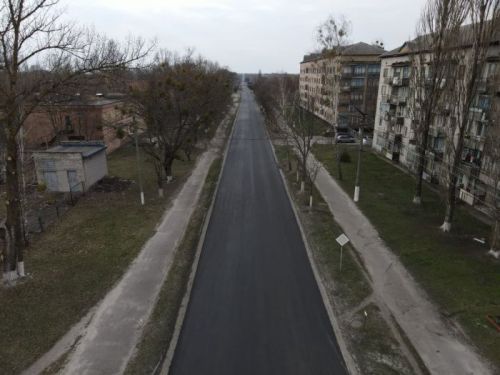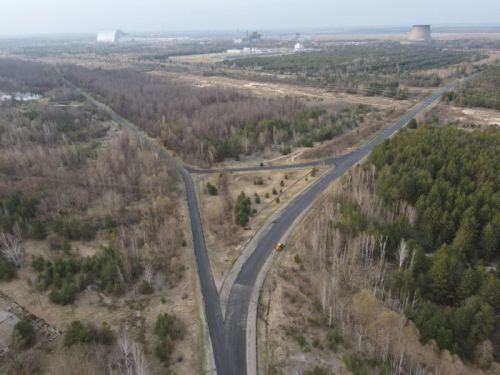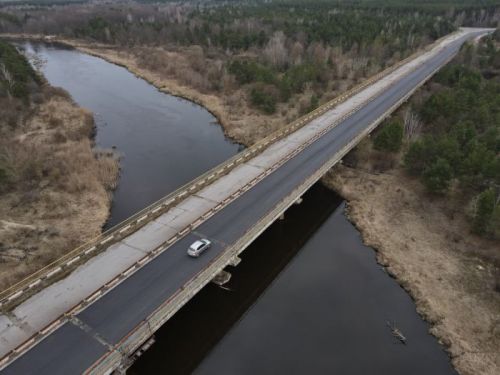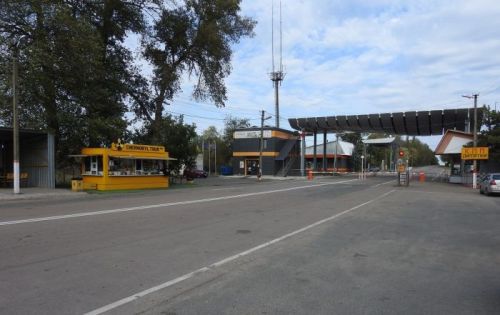Thirty-five years have passed since the accident at the Chornobyl nuclear power plant. The global tragedy is most often remembered on its anniversary, April 26, after which the problems that have accumulated over the years continue to wait for their solution. Recently, the Office of the President of Ukraine began viewing the 30-kilometer exclusion zone around the Chornobyl nuclear power plant not only as a problem but also as a significant tourist potential that could be achieved three and a half decades after the accident.
Tourism and not only
During the presentation of President Volodymyr Zelenskyi’s infrastructure plans for 2021 at the beginning of this year, he and Ukraine’s Minister of Culture and Information Policy Oleksandr Tkachenko emphasized that access to cultural and tourist sites (which now undoubtedly include the Chornobyl Exclusion Zone) should lay the foundation for their further development and popularization. "We are talking about joining forces with Ukravtodor and Ukrzaliznytsia. We are trying to combine all these objects into tourist routes. All this will be laid out on maps; convenient roads, railways," Tkachenko said at the time.
The interest of tourists in the Chornobyl Exclusion Zone has been extremely high in recent decades and the number of travelers who want to see Prypyat and the remains of the nuclear power plant with their own eyes has increased exponentially following the release of the HBO television series "Chernobyl." In total, 46,000 tourists visited the Chornobyl Exclusion Zone in 2017 and 125,000 in 2019 and 80% of them were foreigners.
The exclusion zone is currently considered primarily as an attractive tourist destination, to which one and a half dozen authorized tour operators organize official excursions through 24 different routes. However, the Ukrainian authorities believe that there is an obvious shortage of safe accommodation. There are only two hotels and several shops in the Chornobyl Exclusion Zone. The territory of the exclusion zone is quite large (2,600 square kilometers, which is 25 times larger than the area of Paris) and it is impossible to view all the interesting facilities at various locations in the zone in a single day. According to tour operators, tourists are currently using the infrastructure of nearby villages, where they can spend the night and eat.
However, tourism is the easiest but not the only way to beneficially use the 30-kilometer zone around the Chornobyl nuclear power plant. The Office of the President and the State Agency for Management of the Exclusion Zone (GAZO) have proposed taking a much broader approach. Their main message is that the exclusion zone is not only a territory of sorrow and a source of problems but also an opportunity for development. GAZO has teamed up with the State Road Service (Ukravtodor) to launch the foreigner-oriented Cherbobyl35.com.ua website specifically for the 35th anniversary of the Chornobyl nuclear disaster. All the potential uses of the exclusion zone are presented on the website.
Alternative energy and waste recycling are two examples are. The first solar power plant, Solar Chornobyl, was commissioned there in 2018 and there is potential for development of wind energy. The remoteness of the exclusion zone from residential settlements allows the option of building waste processing plants and hazardous waste disposal facilities on its territory to be considered.
An important but not yet fully realized priority is expansion of the scientific activities in the 30-kilometer exclusion zone. A closed territory with the unique conditions of long-term isolation and limited access where the flora and fauna have undergone persistent pollution could become a real boon for a number of scientific studies because this is a region with a set of technogenic and natural parameters that cannot be found anywhere else in the world.
In addition, the exclusion zone around the Chornobyl nuclear power plant is a good place to locate cultural objects and installations and, of course, to film.
Ukraine is offering all of the above as investment opportunities. “Invest in collective memory” is the slogan on the website, but it implies not only culture and tourism. Investing in collective memory is also about contributing to learning about the causes and consequences of the tragedy, as well as investing in learning lessons and benefiting from the tragedy. "Humanity is capable of recovering even after global catastrophes. Ukraine is working to ensure that this territory becomes not a place of oblivion, but a place of development. The latest technologies are being introduced and nature is being restored in the Chornobyl zone while the Chornobyl nuclear power plant has become a unique platform for generation of alternative energy," said Kyrylo Tymoshenko, the deputy head of the Office of the President of Ukraine.
Road repair
Ukravtodor was the first to begin tackling the problems in the Chornobyl Exclusion Zone. The roads inside the zone (198 kilometers of roads) were transferred from the books of GAZO onto the books of the Kyiv regional division of Ukravtodor in October 2020. In total, three roads were accepted, two of them were commissioned in 1987, and one was reconstructed in 2009. The roads are the following:
- between the city of Chornobyl and the Ovruch checkpoint;
- between the Dytyatky checkpoint and Prypyat;
- the access road to the settlements of Marianivka, Buriakivka, Stari Sokoly, and Zelenyi Mis and the Chornobyl Nuclear Power Plant Specialized State Enterprise.
The Kyiv Road Service told the CFTS that these sections of roads would be connected to the existing regional highways P-56 (Chernihiv – Pakul – Slavutych – Slavutych checkpoint) and P-02 (Kyiv – Ivankiv – Ovruch – road section from Chornobyl city to Ovruch checkpoint) in the future.
Active restoration of the road surface began in 2021. According to Ukravtodor, the repair of 40 kilometers of road between the Dytyatky and Prypyat checkpoints and the access road to the Chornobyl nuclear power plant has been completed. The contractor for the works was the Avtomagistral company.
According to the Kyiv regional division of Ukravtodor, roadworks in the exclusion zone are being performed in accordance with special protocols that require workers to undergo radiation monitoring when entering or leaving the 30- and 10-kilometer zones around the nuclear power plant. The roadworks themselves are performed in accordance with the technical requirements, drag brooms are not used, and only the top layers of asphalt are laid (no soil digging is allowed). This is allowed in the exclusion zone because large-sized vehicles do not travel there, Ukravtodor said.
In total, the Kyiv Road Service has performed commission inspections of three roads with branches and five artificial structures on them. The inspections established that three bridges are in disrepair and require major repairs. The road service plans to renovate all the priority routes in the Chornobyl zone, i.e. those that support environmental protection activities and connect popular tourist locations, by the end of 2023.
"Of course, visitors to the exclusion zone are interested in a dead city and not in infrastructure, but they need normal roads to get there. If you look at photographs from the exclusion zone, it becomes clear that new roads will not affect the landscape. Our main goal is accessibility. This is what we are working on," Ukravtodor’s head Oleksandr Kubrakov said.
Tour operators organizing trips to the exclusion zone are also talking about the importance of accessibility.
"Until recently, the main problem in the exclusion zone was roads. Thank God, this issue was resolved recently. The roads in the exclusion zone have been completely redone, right down to the markings. In addition, the Dytyatky checkpoint was overhauled in the past year to significantly improve its capacity because a large number of buses have always accumulated there during the season. All the procedures are now faster thanks to the overhaul of the checkpoint," said Kostiantyn Vlasov, director of the tour operator Chornobyl Exclusive Tours.
In addition, Vlasov noted that an information center where anyone can obtain comprehensive information about the exclusion zone and the procedure for entering it has been opened at the checkpoint. An electronic ticketing system has also been in operation for several years, saving operators a large volume of paperwork.
Vlasov pointed out the problem that still needs to be solved. “Unfortunately, it is not yet possible to enter through the Paryshiv checkpoint, which also provides access to the territory of Belarus. Currently, only a railway passes through Belarus on transit. However, this is not possible for ordinary overland transport because the road only partially passes through the territory of Belarus. Even Belarusian tourists wishing to visit the exclusion zone are forced to first travel to Slavutych and get to the exclusion zone from there," Vlasov said.
To the exclusion zone by river and rail
The Ministry of Infrastructure has recently been considering the possibility of launching river tourist routes from Kyiv to Chornobyl. "We have excellent tourist routes, for example, Kaniv and Chornobyl, where this type of transport link will be in demand and will be optimal. We must develop this," Infrastructure Minister Vladyslav Kryklii said in March. According to him, the ministry is currently continuing work on the Strategy for Development of Inland Water Transport, the action plan of which will envisage measures for development of passenger transportation. Since domestic tourism will remain the focus of attention for the near future, the minister believes that transportation of passengers by river will also be in demand.
Routes via which small vessels can transport tourists to the exclusion zone on River Dnipro, the Kyiv Reservoir, and River Prypyat are already being developed. However, dredging is required for them to accommodate large pleasure crafts.
"On the Kyiv Sea, there is already a checkpoint near the village of Otashiv through which small tourist vessels can enter Prypyat. But it does not go directly to the city of Prypyat but closer to the city of Chornobyl," Vlasov told the CFTS. According to him, there are two restrictions – water depth and access to locations closer to the power plant itself because access to the lock of the nuclear power plant’s cooling reservoir has long been closed to vessels. “The water routes are relatively ready. They are now at the testing stage,” he said.
As for the railway, a regular electric train currently runs from the city of Slavutych to the exclusion zone. It transports employees of the nuclear power plant but ordinary tourists can also use it if they submit preliminary entry applications. The tourist possibilities of this electric train are constrained by its schedule, but many tourists on multi-day tours from Slavutych still use this route. Undoubtedly, a more flexible train schedule and travel accessibility would increase the number of people willing to use it.







